Altitude Mountain Sickness
If you are looking for Nepal Himalaya trekking, you must know about Acute mountain sickness. The pleasures of trekking in the world's highest mountain ranges cannot be overstated. Neither can the dangers. Altitude sickness can occur in some people as low as 8,000 feet, but serious symptoms do not usually occur until over 12,000 feet. Even then it is not the height that is important, rather the speed in which you ascended to that altitude.
Acute mountain sickness (AMS) is actually more common in fit young men because they are more likely to attempt a rapid ascent by racing up the mountain like some indestructible super hero! As a general rule, it is far safer (and more enjoyable) to avoid altitude sickness by planning a sensible itinerary that allows for gradual acclimatization to altitude as you ascend, (you can race back down as fast as you like!).
Acute Mountain Sickness (AMS)
AMS is very common at high altitude. At over 3,000 meters (10,000 feet) 75% of people will have mild symptoms. The occurrence of AMS is dependent upon the elevation, the rate of ascent, and individual susceptibility. Many people will experience mild AMS during the acclimatization process. The symptoms usually start 12 to 24 hours after arrival at altitude and begin to decrease in severity around the third day.
The symptoms of Mild AMS include:
- Headache
- Nausea & Dizziness
- Loss of appetite
- Fatigue
- Shortness of breath
- Disturbed sleep
- General feeling of malaise
- If possible, don't fly or drive to high altitude. Start below 3,000 meters (10,000 feet) and walk up.
- If you do fly or drive, do not overexert yourself or move higher for the first 24 hours.
- If you go above 3,000 meters (10,000 feet), only increase your altitude by 300 meters (1,000 feet) per day, and for every 900 meters (3,000 feet) of elevation gained, take a rest day to acclimatise.
- Climb high and sleep low! You can climb more than 300 meters (1,000 feet) in a day as long as you come back down and sleep at a lower altitude.
- If you begin to show symptoms of moderate altitude sickness, don't go higher until symptoms decrease.
- If symptoms increase, go down, down, down!
- Keep in mind that different people will acclimatise at different rates. Make sure everyone in your party is properly acclimatised before going any higher.
- Stay properly hydrated. Acclimatisation is often accompanied by fluid loss, so you need to drink lots of fluids to remain properly hydrated (at least four to six liters per day). Urine output should be copious and clear to pale yellow.
- Take it easy and don't overexert yourself when you first get up to altitude. But, light activity during the day is better than sleeping because respiration decreases during sleep, exacerbating the symptoms.
- Avoid tobacco, alcohol and other depressant drugs including, barbiturates, tranquillizers, sleeping pills and opiates such as dihydro codeine. These further decrease the respiratory drive during sleep resulting in a worsening of symptoms.
- Eat a high calorie diet while at altitude.




 Trekking Highlights:
Trekking Highlights:
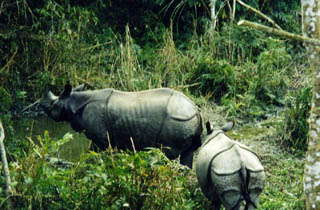 Nepal
is rich in wild life. The tropical jungles of the Terai preserve some
of the best wildlife habitat in Asia. Out of the total geographical area
of Nepal 16% is occupied by national parks, wildlife reserves and
conservation areas. Jungle safari on elephant back is one of the
thrilling experiences. Parsa Wildlife Reserve, Royal Bardia National
Park, Royal Chitwan National Park and the Royal Shukla Phanta wildlife
reserve, offer jungle safari on elephant back or jeep.
Nepal
is rich in wild life. The tropical jungles of the Terai preserve some
of the best wildlife habitat in Asia. Out of the total geographical area
of Nepal 16% is occupied by national parks, wildlife reserves and
conservation areas. Jungle safari on elephant back is one of the
thrilling experiences. Parsa Wildlife Reserve, Royal Bardia National
Park, Royal Chitwan National Park and the Royal Shukla Phanta wildlife
reserve, offer jungle safari on elephant back or jeep.
 Day 04 Drive by bus to Suketar
Day 04 Drive by bus to Suketar.jpg)


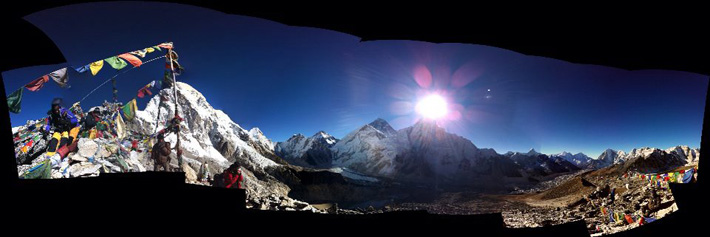 Everest Base Camp trekking starts from Lukla and
continues through Namche Bazaar and enters into Khumbu region. The
trekking provides you wonderful experiences of lifestyle and culture of
Sherpa and Bhotias with the chances of exploring different elements of
the region. Trekking to Everest Base Camp gives the wonderful
experience of Tibetan culture in high elevation and pleasantly colorful
views of rhododendron and fir forests.
Everest Base Camp trekking starts from Lukla and
continues through Namche Bazaar and enters into Khumbu region. The
trekking provides you wonderful experiences of lifestyle and culture of
Sherpa and Bhotias with the chances of exploring different elements of
the region. Trekking to Everest Base Camp gives the wonderful
experience of Tibetan culture in high elevation and pleasantly colorful
views of rhododendron and fir forests.


.jpg)











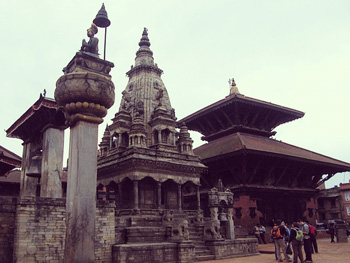 This Package tour gives travelers an opportunity to explore Nepal's
three different regions, each of them is popular culturally,
historically and naturally . Culturally and Historically is
sightseeing in Kathmandu Valley. The highlights three medieval cities- Kathmandu, Patan and Bhaktapur.
The great designed Program take you also Everest Sunrise View point
Nagarkot. It is 32 Kilometer away from Kathmandu City. If the
weather is clear you can see Mt. Everest including other many high
mountains. After sightseeing around the major attractions within the
valley we drive to Chitwan National Park where travelers can enjoy
different jungle activities under the guidance of naturalist. After
Jungle Safari tour in Chitwan, we further drive to another most popular
scenic lake city of Pohara situated under the lap of Mt Machhapuchre (
Fish tail). Few places in the world only have such a variety of
natural beauties crammed into Pokhara valley. For the mountains viewers,
the valley offers the magnificent views of Dhaulagiri, Himchuli,
Machhapuchhre, five peaks of Annapurna and others. Due to its proximity
to the Annapurna mountain range, the city is also a base for trekkers
to the Annapurna Region.
This Package tour gives travelers an opportunity to explore Nepal's
three different regions, each of them is popular culturally,
historically and naturally . Culturally and Historically is
sightseeing in Kathmandu Valley. The highlights three medieval cities- Kathmandu, Patan and Bhaktapur.
The great designed Program take you also Everest Sunrise View point
Nagarkot. It is 32 Kilometer away from Kathmandu City. If the
weather is clear you can see Mt. Everest including other many high
mountains. After sightseeing around the major attractions within the
valley we drive to Chitwan National Park where travelers can enjoy
different jungle activities under the guidance of naturalist. After
Jungle Safari tour in Chitwan, we further drive to another most popular
scenic lake city of Pohara situated under the lap of Mt Machhapuchre (
Fish tail). Few places in the world only have such a variety of
natural beauties crammed into Pokhara valley. For the mountains viewers,
the valley offers the magnificent views of Dhaulagiri, Himchuli,
Machhapuchhre, five peaks of Annapurna and others. Due to its proximity
to the Annapurna mountain range, the city is also a base for trekkers
to the Annapurna Region.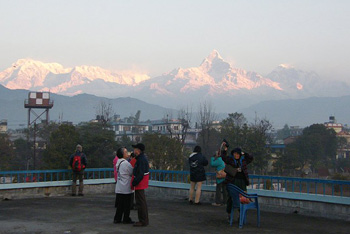 Day 01: Arrive In Kathmandu.
Day 01: Arrive In Kathmandu. 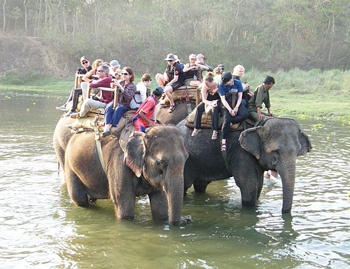 After
breakfast we will drive to Chitwan approximately 120 Kilometer. Upon
arrival in Chitwan, you will be received by the resort manager and
invite for drinks. He will brief on the jungle package program. After
lunch you will be guided for bird watching by the nature guide. Dinner
and Overnight at resort in Chitwan
After
breakfast we will drive to Chitwan approximately 120 Kilometer. Upon
arrival in Chitwan, you will be received by the resort manager and
invite for drinks. He will brief on the jungle package program. After
lunch you will be guided for bird watching by the nature guide. Dinner
and Overnight at resort in Chitwan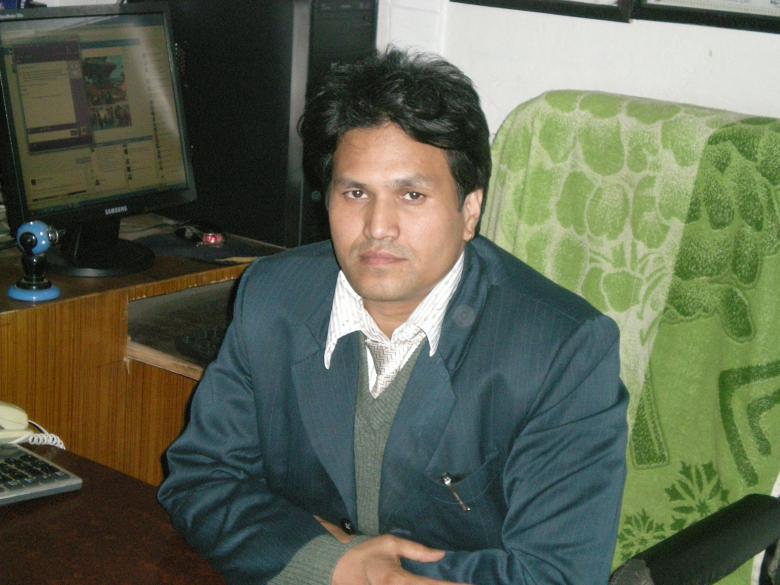 “Babu Karki” Message from Company Director
“Babu Karki” Message from Company Director
